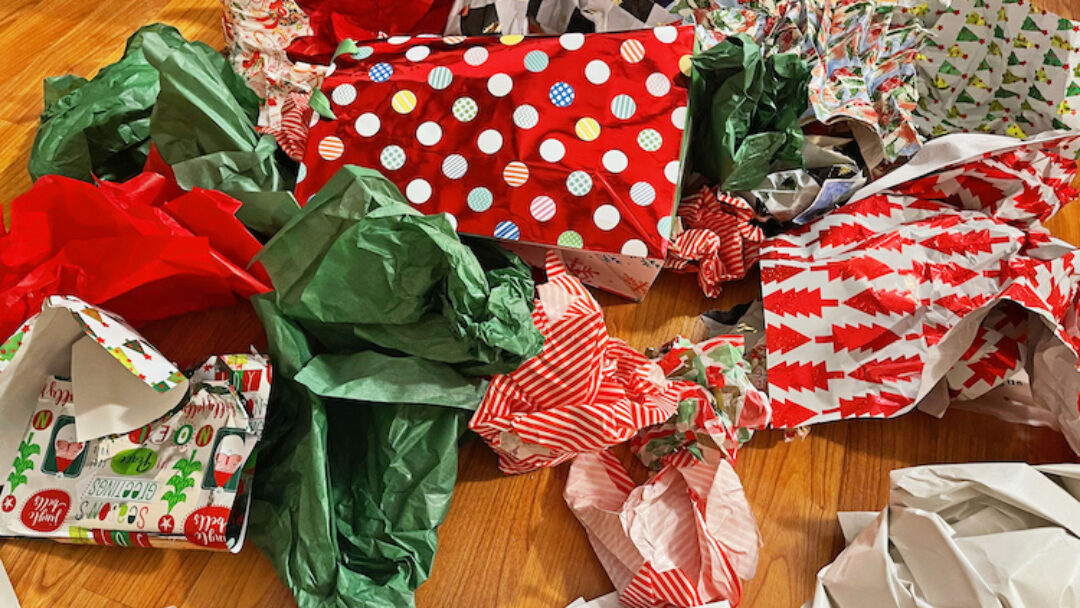When it comes to the holiday season, one of the traditions that we all look forward to is the act of giving and receiving gifts. However, what many people do not realize is the significant environmental impact that traditional gift wrap can have. With the excessive use of non-recyclable materials and the sheer amount of waste generated, it is crucial to understand the importance of finding eco-friendly alternatives.
Every year, millions of tons of gift wrap end up in landfills, contributing to the already alarming rates of waste accumulation. The glossy and metallic finishes found in most traditional gift wraps make them non-recyclable. Additionally, the production of traditional gift wrap involves the use of chemicals and dyes that are harmful to the environment. The energy required to manufacture and transport these materials further intensifies their carbon footprint.
The importance of recycling gift wrap
Recycling gift wrap is an essential step towards reducing waste and minimizing the environmental impact of the holiday season. By recycling, we can divert a significant amount of gift wrap from ending up in landfills and instead give it a new life. Not only does this help conserve resources, but it also reduces the demand for new materials, thus lowering the ecological footprint of gift wrap production.
To effectively recycle gift wrap, it is crucial to understand what types of gift wrap are recyclable. Generally, paper-based gift wrap that lacks glossy or metallic finishes can be recycled. However, it is essential to remove any tape or decorations from the gift wrap before recycling. It is also worth noting that gift wrap that has been torn or crumpled cannot be recycled and should be disposed of in the regular waste bin.
Eco-friendly alternatives to traditional gift wrap
Fortunately, there are several eco-friendly alternatives to traditional gift wrap that can help reduce waste and minimize the environmental impact. One popular alternative is using reusable gift bags. These bags can be made from sustainable materials such as organic cotton or recycled fabrics. They can be reused year after year, significantly reducing waste.
Another eco-friendly option is to use fabric gift wrap. Fabric gift wrap can be made from leftover fabric scraps or old clothes, making it a sustainable choice. Not only does fabric gift wrap reduce waste, but it also adds a unique and personal touch to your gifts. You can get creative with different patterns and designs, making each gift wrap truly one-of-a-kind.
How to recycle gift wrap properly
Properly recycling gift wrap is essential to ensure that it can be effectively processed and turned into new materials. Here are some guidelines to follow when recycling gift wrap:
- Remove any tape, ribbons, or bows from the gift wrap before recycling. These non-paper elements can contaminate the recycling process.
- Check the recycling guidelines in your local area to determine which types of gift wrap are accepted. Some recycling facilities may have specific requirements or restrictions.
- Flatten the gift wrap as much as possible to maximize space efficiency during transportation and processing. This will also help prevent it from getting tangled with other materials.
By following these simple steps, you can contribute to the recycling efforts and ensure that gift wrap is given a second life instead of ending up in landfills.
Reducing waste during the holiday season
Reducing waste during the holiday season goes beyond just recycling gift wrap. Here are some additional tips to help minimize waste:
- Opt for electronic greeting cards instead of traditional paper cards. Digital cards not only save paper but also eliminate the need for transportation, reducing carbon emissions.
- Choose gifts that are sustainable and have a long lifespan. Consider giving experiences or consumables instead of material items that may end up unused or discarded.
- Plan your meals and gatherings carefully to avoid food waste. Only prepare and serve the amount of food that will be consumed. Any leftovers can be stored or donated to minimize waste.
By implementing these waste-reducing practices, you can enjoy a more eco-friendly holiday season while still celebrating and enjoying the festivities.
This holiday season, let’s make a conscious effort to reduce waste and minimize the environmental impact of our celebrations. By recycling gift wrap, exploring eco-friendly alternatives, and adopting sustainable practices, we can enjoy a festive and joyful Christmas creating memories that are both meaningful and sustainable.








